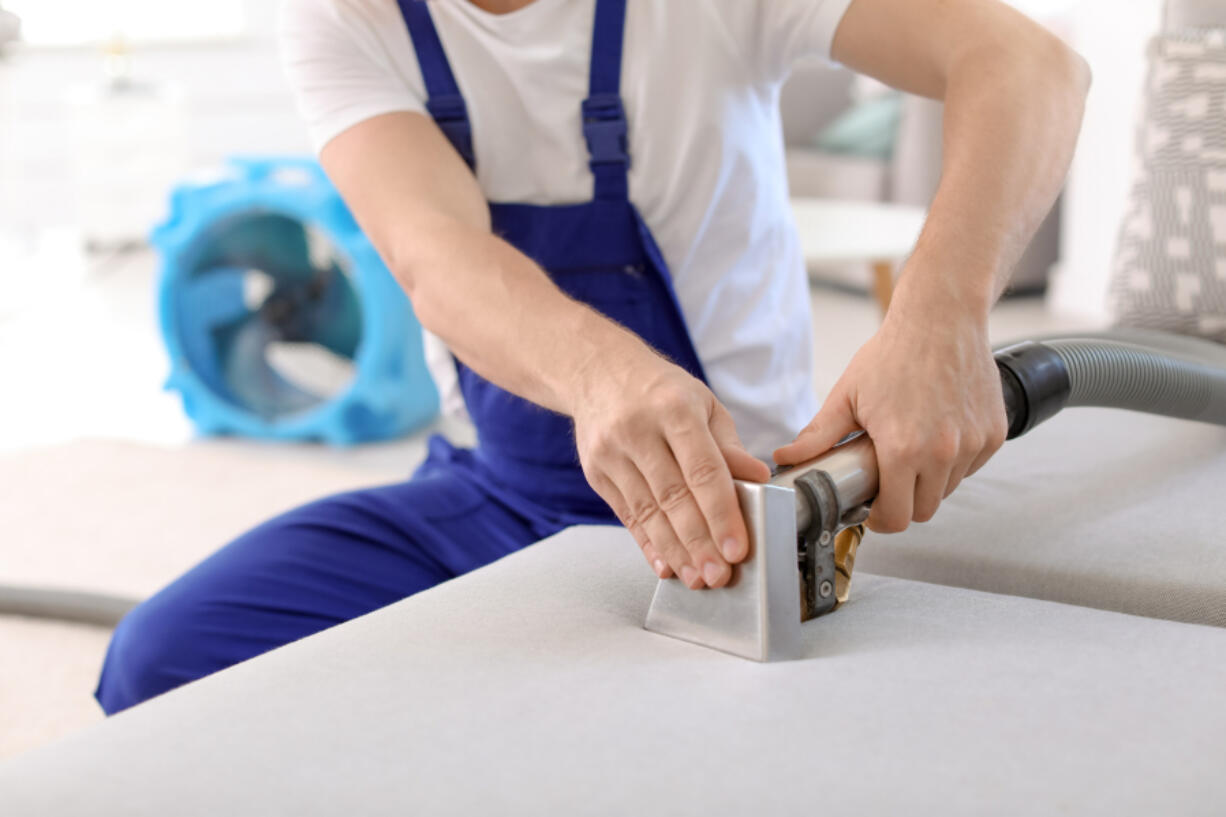Unless someone — we’re looking at you, kids and pets — has spilled something potentially stain-causing on a couch or chair, we don’t often give a lot of thought to upholstery cleaning.
But regular cleaning is both preventative maintenance and a home improvement task. It helps prolong the life of furniture, maintains its appearance, removes allergens and dirt, and contributes to a healthier indoor environment. Cleaning gives your furniture a new lease on life and can make it look brand new.
Signs indicating the need for upholstery cleaning include visible stains, odors, dust accumulation, and allergy flare-ups. While a schedule isn’t set in stone, regular cleaning, especially when these signs appear, helps maintain the upholstery’s condition.
Hiring for upholstery cleaning
Professionals hired for upholstery cleaning will assess the fabric type, use specialized cleaning solutions and equipment to deep clean the upholstery, remove stains, and possibly apply protective treatments. Hire professional upholstery cleaners or furniture cleaning services that specialize in this field.
When hiring, ask about their experience, cleaning methods used, the scope of services, pricing structure, any guarantees and whether they use eco-friendly products. While licensing requirements usually aren’t required, ensuring they have experience, insurance and expertise in handling different fabric types is crucial.
Professional upholstery cleaning tends to cost between $100 and $300 on average. Costs depend on factors such as the type and size of furniture, the fabric/material, and the cleaning method used. Investing in professional services for delicate or heavily soiled upholstery might be advisable for effective cleaning.
DIY upholstery cleaning might involve using homemade solutions like vinegar or mild detergent for spot cleaning. However, for comprehensive cleaning or delicate fabrics, professional services are more effective and safe.
If you DIY this job, check your warranty first. Using the incorrect cleaning technique could void your warranty.
Upholstery cleaning can be seen as both required maintenance for furniture longevity and an optional project for aesthetic upkeep. The frequency of upholstery cleaning depends on usage, visible dirt or stains, and the fabric type. Periodic cleaning, such as annually or biennially, helps maintain upholstery quality.
Understanding fabric cleaning tags
The tags on couches and chairs can give you vital information about the best way to clean them. Here’s what certain codes mean:
W: The piece can be cleaned with water-based products and is an easy piece of furniture for DIY upholstery cleaning.
S: This can only be cleaned with a special dry-cleaning solvent or water-free product. Water-based cleaners could damage the dye or fabric.
WS or SW: Either water-based or dry-cleaning materials may be used. However, the fabric is probably more fragile than W types, so carefully spot test any cleaner before using it.
X: This fabric cannot be cleaned with either water or the standard solvents most upholstery cleaners use, so even pros will struggle with this unless they have experience with that particular fabric. An X fabric should not be a DIY job.



